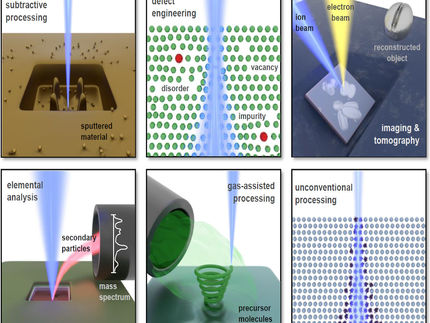Surface science goes inorganic
Powerful concept offers new approach to understanding surfaces of materials
Advertisement
A collaboration between researchers at Northwestern University's Center for catalysis and scientists at Oxford University has produced a new approach for understanding surfaces, particularly metal oxide surfaces, widely used in industry as supports for catalysts. This knowledge of the surface layer of atoms is critical to understanding a material's overall properties. The findings were published by Nature Materials.
Using a combination of advanced experimental tools coupled with theoretical calculations, the research team has shown how, using methods commonly taught to undergraduate chemistry students, one can understand how atoms are arranged on a material's surface.
"For a long time we have not understood oxide surfaces," said Laurence Marks, professor of materials science and engineering in the McCormick School of Engineering and Applied Science at Northwestern. "We only have had relatively simple models constructed from crystal planes of the bulk structure, and these have not enabled us to predict where the atoms should be on a surface.
"Now we have something that seems to work," Marks said. "It's the bond-valence-sum method, which has been used for many years to understand bulk materials. The way to understand oxide surfaces turns out to be to look at the bonding patterns and how the atoms are arranged and then to follow this method."
Marks, together with Kenneth Poeppelmeier, professor of chemistry in Northwestern's Weinberg College of Arts and Sciences, and Martin Castell, university lecturer in the department of materials at Oxford, led the research.
In the study, Northwestern graduate student James Enterkin analyzed electron diffraction patterns from a strontium titanate surface to work out the atomic structure. He combined the patterns with scanning-tunnelling microscopy images obtained by Bruce Russell at Oxford. Enterkin then combined them with density functional calculations and bond-valence sums, showing that those that had bonding similar to that found in bulk oxides were those with the lowest energy.
Most read news
Topics
Organizations
Other news from the department science

Get the chemical industry in your inbox
By submitting this form you agree that LUMITOS AG will send you the newsletter(s) selected above by email. Your data will not be passed on to third parties. Your data will be stored and processed in accordance with our data protection regulations. LUMITOS may contact you by email for the purpose of advertising or market and opinion surveys. You can revoke your consent at any time without giving reasons to LUMITOS AG, Ernst-Augustin-Str. 2, 12489 Berlin, Germany or by e-mail at revoke@lumitos.com with effect for the future. In addition, each email contains a link to unsubscribe from the corresponding newsletter.































































